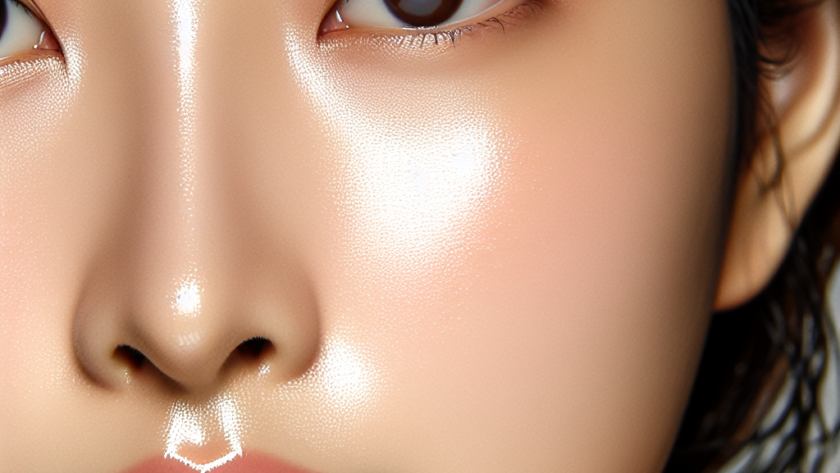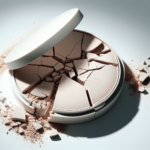Taking care of your skin is essential for maintaining a healthy and radiant complexion. But with countless products and advice out there, it can be overwhelming to figure out where to start. In this article, we will explore the fundamentals of a good skincare routine, helping you establish a solid foundation for achieving glowing and nourished skin. From cleansing and moisturizing to protecting and nourishing, we’ll guide you through the essential steps that will leave you with a radiant complexion. So, let’s jump right in and unlock the secrets to a successful skincare routine.
Cleansing
Cleansing is a fundamental step in any skincare routine. It involves removing dirt, oil, and impurities from your skin, allowing it to breathe and stay healthy. Choosing the right cleanser is crucial because not all products are created equal. Consider your skin type and specific concerns when selecting a cleanser that works for you.
Washing your face twice a day, once in the morning and once before bed, is a golden rule to follow. This helps maintain a clean canvas for your skincare products to penetrate better. By cleansing in the morning, you remove the sweat, oil, and bacteria that have accumulated overnight. At night, cleansing eliminates makeup, pollutants, and the dirt of the day. Remember to be gentle yet thorough when cleansing, as excessive scrubbing can irritate and damage your skin.
Using lukewarm water is recommended for cleansing. Hot water can strip your skin of its natural oils, leading to dryness and irritation, while cold water may not effectively remove impurities. Find a comfortable temperature that allows your cleanser to work its magic without causing discomfort.
Avoid harsh scrubbing or using abrasive exfoliants. While exfoliation is a vital step in skincare, it’s important to choose gentle exfoliants that won’t damage your skin. Look for ingredients like alpha-hydroxy acids (AHAs) or beta-hydroxy acids (BHAs) to gently slough away dead skin cells, leaving your complexion brighter and smoother. Remember to exfoliate only 1-3 times a week, depending on your skin’s needs and sensitivity.
Proper technique for cleansing involves massaging the cleanser onto damp skin in circular motions, paying extra attention to areas prone to congestion or where makeup tends to accumulate, like the T-zone. Take your time and be thorough, ensuring that all traces of makeup, dirt, and sunscreen are removed. Rinse with lukewarm water until all the cleanser has been washed away, then gently pat dry with a clean towel.
Exfoliation
Understanding the purpose of exfoliation is key to maintaining a healthy complexion. Exfoliation helps remove dead skin cells from the surface of your skin, revealing a smoother and brighter appearance. There are two types of exfoliants: physical and chemical.
Physical exfoliants involve using particles or tools to physically scrub away dead skin cells. Common physical exfoliants include sugar scrubs, brushes, or textured cloths. However, it’s essential to be gentle when using physical exfoliants to avoid irritating or damaging your skin.
Chemical exfoliants, on the other hand, use chemical compounds to dissolve the bonds between dead skin cells, allowing them to be easily shed. AHAs like glycolic acid and lactic acid, as well as BHAs like salicylic acid, are popular choices for chemical exfoliation. These ingredients are effective in promoting cell turnover and addressing specific skin concerns like acne, hyperpigmentation, and uneven texture.
The frequency of exfoliation depends on your skin’s tolerance and needs. Some people can exfoliate every day without adverse effects, while others may only tolerate exfoliation once or twice a week. Listen to your skin and adjust your routine accordingly. Over-exfoliating can lead to dryness, sensitivity, and irritation, so always err on the side of caution.
When it comes to exfoliation, gentle is often better. Intense exfoliation, such as using strong chemical peels or aggressive physical exfoliants, should be done sparingly and under professional guidance. Remember to take care of your skin, and if you experience any discomfort or adverse reactions, it’s best to consult a dermatologist.
Toning
Toners play an important role in a skincare routine. They help balance the pH level of your skin, remove any residue after cleansing, and prepare your skin for the next steps of your routine. Choosing the right toner for your skin type is essential to ensure its effectiveness.
When selecting a toner, consider your skin type and any specific concerns you want to address. For oily or acne-prone skin, look for toners with ingredients like witch hazel or tea tree oil to help control excess oil and minimize breakouts. Dry or sensitive skin types may benefit from hydrating toners that contain ingredients like hyaluronic acid or rose water.
There are different application methods for toners, such as using a cotton pad or spraying it directly onto your face. The choice is yours and depends on your personal preference. Gently patting the toner onto your skin with your fingertips can also be effective.
Avoid toners with alcohol, as they can be drying and irritating on the skin. Look for alcohol-free toners or those that contain a minimal amount that won’t be harmful.
Using a toner has several benefits for your skin. It can help tighten the appearance of pores, balance oil production, and improve the absorption of serums and moisturizers. Toners can also provide a refreshing and invigorating sensation, leaving your skin feeling revitalized.
Moisturizing
Moisturizing is a crucial step in any skincare routine, regardless of your skin type or concerns. It helps hydrate and nourish your skin, maintaining its natural moisture barrier and preventing dryness and fine lines. Finding the right moisturizer for your skin is essential to reap its full benefits.
When searching for a moisturizer, consider your skin type and concerns. For dry skin, opt for a rich and emollient moisturizer that contains ingredients like hyaluronic acid and shea butter. Oily or acne-prone skin types may benefit from lightweight, oil-free moisturizers that won’t clog pores.
Application techniques for moisturizers vary, but the general rule is to apply them using gentle upward motions on clean, dry skin. This helps the product penetrate effectively and supports lymphatic drainage. For an extra moisture boost, you can also lightly spritz your face with a hydrating facial mist before applying your moisturizer.
Daytime and nighttime moisturizers serve different purposes. Daytime moisturizers often include SPF to protect your skin from the harmful effects of the sun. Look for a broad-spectrum sunscreen with at least SPF 30 for adequate protection. Nighttime moisturizers, on the other hand, focus on replenishing and repairing the skin while you sleep. They may contain ingredients like retinol, peptides, or antioxidants to promote cell turnover and rejuvenation.
Addressing specific skin concerns with moisturizers is possible. Look for targeted formulations that address issues like hyperpigmentation, dullness, or aging. Ingredients like vitamin C, niacinamide, or peptides can help improve these concerns when incorporated into your moisturizer.
Sun Protection
Understanding the harmful effects of sun exposure is crucial for maintaining healthy skin. The sun’s UV rays can cause premature aging, wrinkles, sunspots, and even increase the risk of skin cancer. Incorporating sun protection into your skincare routine is vital for maintaining a youthful and healthy complexion.
Choosing the right sunscreen is important to ensure proper protection. Look for a broad-spectrum sunscreen that protects against both UVA and UVB rays. SPF 30 or higher is recommended for adequate coverage. Consider your skin type and preferences when selecting a sunscreen. There are various formulations available, such as creams, lotions, gels, or sprays.
Application of sunscreen should be done generously and evenly to all exposed areas. Pay special attention to areas that are often neglected, such as the ears, neck, and the back of the hands. Don’t forget to protect your lips with a lip balm that contains SPF as well.
Reapplication of sunscreen throughout the day is necessary, especially if you’re outdoors or sweating heavily. It’s recommended to reapply every two hours or as directed on the product label. If you’re wearing makeup, consider using a powder or spray sunscreen for quick touch-ups without disturbing your makeup.
In addition to sunscreen, there are other sun protection methods you can incorporate into your routine. Wearing protective clothing like wide-brimmed hats, sunglasses, and long-sleeved shirts can provide extra shielding against the sun’s harmful rays. Seeking shade during peak sun hours, generally between 10 am and 4 pm, can also reduce your exposure.
Eye Care
Taking care of your eyes is an important part of a comprehensive skincare routine. The skin around the eyes is delicate and thin, making it prone to fine lines, puffiness, and dark circles. Incorporating proper eye care steps can help maintain a youthful and refreshed appearance.
Choosing the right eye cream is essential. Look for formulations that target your specific concerns, whether it’s reducing puffiness, minimizing dark circles, or addressing fine lines and wrinkles. Ingredients like retinol, caffeine, hyaluronic acid, and peptides can provide effective results when incorporated into eye creams.
Application techniques for eye cream involve using your ring finger to gently tap or massage the product onto the skin around the eyes. Avoid harsh rubbing or pulling, as this can contribute to premature wrinkling and sagging of the delicate skin in that area. Remember to be gentle and apply the product starting from the inner corner of the eye, moving outward.
Addressing specific eye concerns can be done by choosing eye creams designed for those issues. Some eye creams may have brightening ingredients like vitamin C or complexes that target puffiness and dark circles. By incorporating these targeted treatments, you can achieve noticeable improvements in the appearance of your eyes.
Serums
Serums are highly concentrated formulations that contain a high concentration of active ingredients. They are designed to penetrate deeply into the skin and provide targeted treatments for specific concerns. Incorporating serums into your skincare routine can bring about remarkable improvements in your complexion.
Understanding what serums are and why you should use them is essential. Serums tackle specific concerns like hydration, brightening, firming, or even acne. They are formulated with active ingredients such as hyaluronic acid, vitamin C, retinol, or peptides, which can offer powerful results when used consistently.
Proper application of serums involves applying a few drops onto cleansed and toned skin. Gently pat and press the serum into your face and neck, allowing it to absorb fully. Avoid rubbing or pulling, as this can interfere with the serum’s efficacy. If you’re using multiple serums, layer them from thinnest to thickest consistency for optimal absorption.
Benefits of incorporating serums into your routine are numerous. They provide potent doses of active ingredients that target specific concerns, offering faster and more noticeable results compared to other skincare products. Serums can also enhance the effectiveness of your moisturizer and other products in your routine.
Masks
Masks play a pivotal role in a comprehensive skincare routine. They offer targeted treatments, nourishment, and rejuvenation, providing a spa-like experience in the comfort of your own home. Incorporating masks into your routine can provide a much-needed boost to your skin.
Different types of masks cater to various concerns and needs. Clay masks are excellent for oily or acne-prone skin, as they help absorb excess oil and deeply cleanse pores. Sheet masks are soaked in serums and are great for hydrating and brightening. Gel masks can calm and soothe irritated or sensitive skin. Look for masks that address your specific concerns.
Frequency of using masks depends on your skin’s needs. Some people may benefit from using masks once or twice a week, while others may indulge in masking sessions more frequently. Listen to your skin and adjust your routine accordingly. Avoid overdoing it, as this can cause irritation or imbalance in the skin.
Proper application and removal of masks are important to ensure their effectiveness. Apply the mask onto clean, dry skin, avoiding the delicate eye and lip areas. Follow the instructions on the packaging regarding timing, as leaving a mask on for too long can lead to dryness or sensitivity. To remove the mask, rinse with lukewarm water and gently pat your skin dry, or use a damp cloth to wipe it off.
Addressing specific skin concerns with masks is possible. Look for masks specifically formulated to address issues like acne, dryness, dullness, or aging. Many masks contain ingredients like charcoal, hyaluronic acid, or vitamin C, which can provide targeted benefits when regularl




